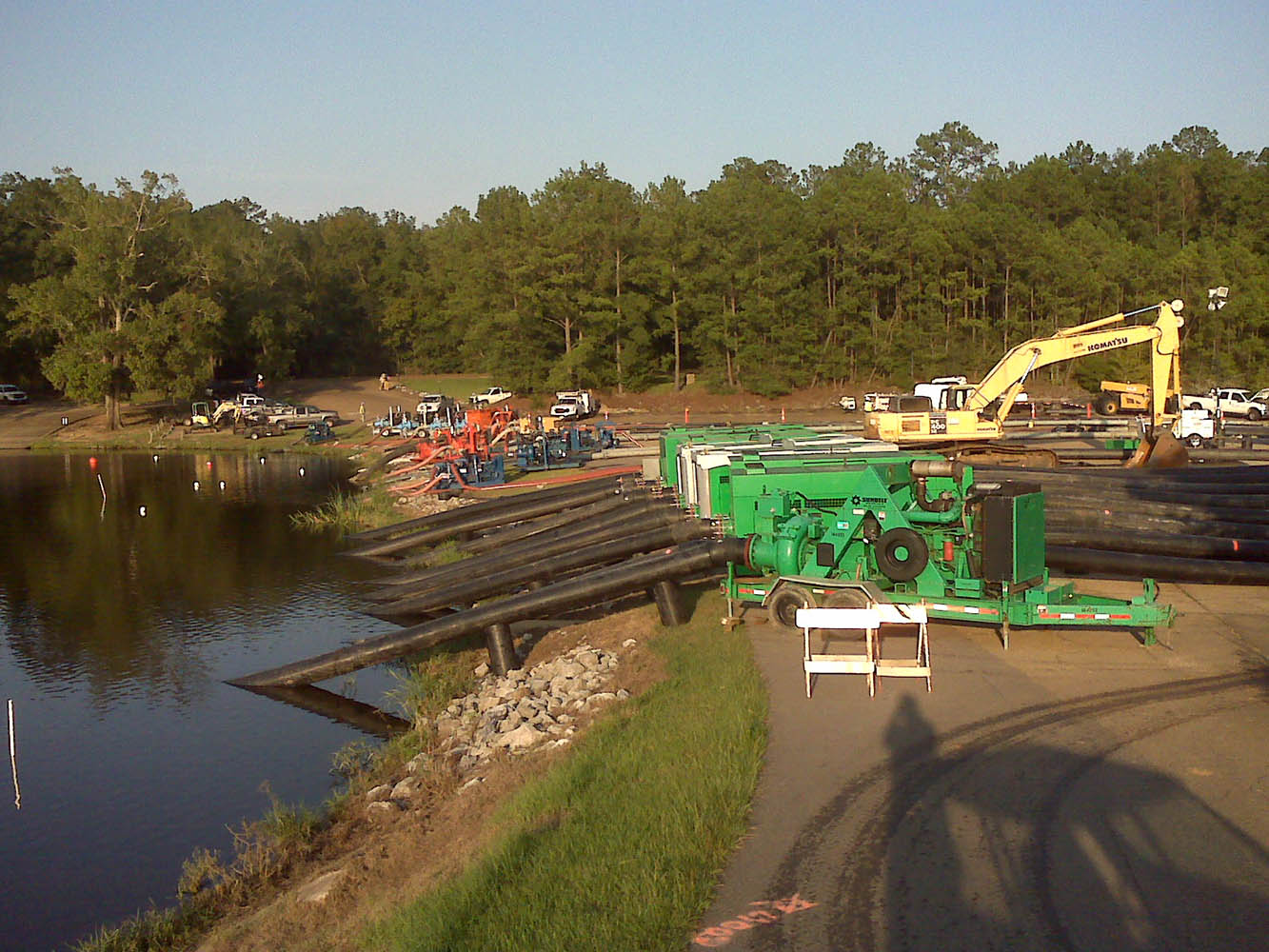Dam Safety
The goal of the Dam Safety Program is to protect people and property from the damaging consequences of catastrophic dam failures. Since 1960, in the United States there have been at least 25 dam failures that caused one or more fatalities. The worst of these failures, in terms of loss of life, was the 1972 failure of a privately-owned tailings dam in Buffalo Creek, West Virginia, which devastated a 16-mile long valley with 6,000 inhabitants. As a result of that one failure, 125 people were killed and 3,000 were left homeless.
Each year, there are a number of dam failures in Mississippi and probably an equal number of dams that are breached under controlled conditions to avoid the possibility of a sudden failure. Some dam failures in the state have caused significant property damage, but there have been no fatalities in Mississippi attributable to a dam failure. Our goal is to provide sufficient oversight of the operational safety and structural integrity of dams in Mississippi to minimize the possibility of a life threatening catastrophic failure occurring at a dam that falls under our jurisdiction.
The Dam Safety Program classifies all regulated dams into three categories: High Hazard, Significant Hazard, or Low Hazard as shown below:
- High Hazard – A dam whose failure may cause loss of life, serious damage to homes, industrial or commercial buildings, important public utilities, main highways or railroads. Dams constructed in existing or proposed residential, commercial or industrial areas will be classified as high hazard dams, unless the applicant presents clear and convincing evidence to the contrary.
- Significant Hazard- A dam whose failure may cause significant damage to main roads, minor railroads, or cause interruption of use or service of relatively important public utilities.
- Low Hazard- A dam whose failure may cause damage to farm buildings (excluding residences), agricultural land, or county or minor roads.
For additional information, please see the “Frequently Asked Questions” and the “Dam Safety Regulations” links below:
Click here to view proposed regulations for Dam Safety Grant Program
Our Duties
- Enforce the Dam Safety Statutes and Regulations of the State
- Receive and process requests for authority to construct dams
- Review the design, plans, and specifications for all dams constructed in the state
- Inspect dams that fall under State jurisdiction periodically.
- Provide information and educational outreach to dam owners and the general public
- Oversee the development of emergency action plans for high hazard dams, and assure the plan is reviewed and updated periodically
- Maintain a database and files on all dams in the state
- Maintain the Mississippi portion of the National Dam Inventory
- Respond to dam emergencies
Dam Inspections
Dam Safety Regulation, Title II: Part 7, Chapter 3, requires all owners of High Hazard and Significant Hazard Dams have their dams inspected by a registered professional engineer at recurring intervals to be set by the division. All High Hazard dams must also have an Emergency Action Plan (EAP). EAPs may also be required for some Significant Hazard Dams. Guidelines for the inspections and for the preparation of the EAPs can be accessed from the links listed below.



